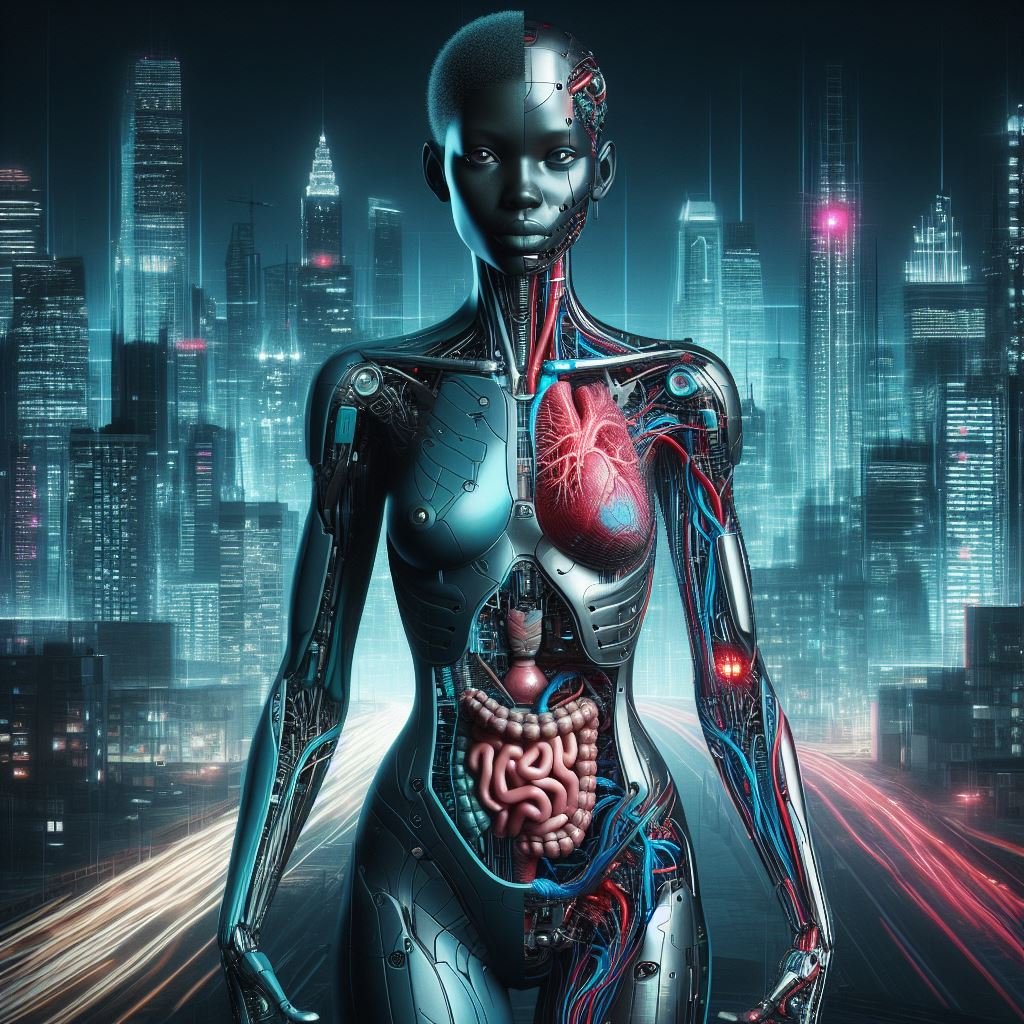Exploring the Visions and Scenarios of BCI-Enabled Future
Introduction
In recent years, advancements in Brain-Computer Interface (BCI) technology have ignited discussions about potential futures that were once confined to the realms of science fiction. This blog post delves into the intriguing visions and scenarios that emerge when we contemplate a future shaped by BCI, including the singularity, the posthuman, the cyborg, and beyond.
As technology continues to advance at an exponential rate, the possibilities for our future become increasingly intriguing. One area that has captured the imagination of scientists, futurists, and enthusiasts alike is the field of Brain-Computer Interfaces (BCIs). These remarkable devices have the potential to revolutionize the way we interact with technology and even transform our very existence. In this article, we will explore some of the visions and scenarios of BCI-enabled futures, including concepts like the singularity, the posthuman, and the cyborg.
The Singularity: A Technological Revolution

One of the most fascinating concepts associated with BCI-enabled futures is the idea of the singularity. Coined by mathematician and science fiction writer Vernor Vinge, the singularity refers to a hypothetical point in the future when artificial intelligence surpasses human intelligence. BCIs play a crucial role in this vision, as they provide a direct interface between the human brain and advanced AI systems.
The concept of the singularity, popularized by futurist Ray Kurzweil, envisions a future where human and artificial intelligence converge, leading to unprecedented advancements. BCI plays a pivotal role in this scenario by facilitating direct communication between the human brain and advanced computing systems, potentially resulting in enhanced cognitive capabilities and accelerated learning.
Imagine a world where our thoughts can seamlessly merge with the collective knowledge and computational power of AI. BCIs could enable us to access information instantly, communicate telepathically, and enhance our cognitive abilities beyond our wildest dreams. The singularity represents a paradigm shift in human evolution, where our species becomes indistinguishable from the technology we create.
The Posthuman: Redefining Humanity

Another vision that emerges from the realm of BCI-enabled futures is the concept of the posthuman. The posthuman represents a new stage in human evolution, where we transcend our biological limitations through the integration of technology. BCIs offer a pathway to this transformation by allowing us to augment our physical and cognitive abilities.
Posthumanism explores the idea of transcending traditional human limitations through technological enhancements. BCI, as a transformative technology, opens the door to a posthuman era where individuals can augment their physical and cognitive abilities. This section explores the ethical considerations and societal implications of a world where humans actively modify themselves to surpass biological constraints.
Imagine a future where individuals can enhance their memory, learn new skills effortlessly, or even control external devices using only their thoughts. BCIs could enable us to overcome disabilities, extend our lifespan, and redefine what it means to be human. The posthuman future raises philosophical and ethical questions about the nature of identity, consciousness, and the boundaries of our existence.
The Cyborg: Humans and Machines United

The concept of the cyborg, popularized by science fiction, becomes a tangible reality in BCI-enabled futures. A cyborg, short for cybernetic organism, refers to an individual who has integrated technology into their body to enhance their capabilities. BCIs offer a direct pathway to this integration, as they create a seamless connection between the human brain and external devices.
As BCI technologies continue to evolve, the line between human and machine becomes increasingly blurred. This point investigates the prospect of cyborg societies, where individuals seamlessly integrate with technology, leading to a symbiotic relationship. The blog explores the challenges and benefits associated with the coexistence of humans and machines in everyday life.
Imagine a future where individuals have bionic limbs that respond to their thoughts, or neural implants that enhance their sensory perception. BCIs could enable us to merge with machines, blurring the lines between human and artificial intelligence. The cyborg future raises questions about identity, privacy, and the potential for human-machine symbiosis.
Ethical Dilemmas and Privacy Concerns
The rapid progression of BCI technologies raises important ethical questions. This section delves into the potential privacy concerns and ethical dilemmas surrounding the use of BCIs, emphasizing the need for responsible development and implementation to safeguard individual rights and societal well-being.
We’ve written a blog post related to Ethical Challenges of Neuralink here if you are interested.
Brain-Computer Interfaces (BCIs) raise ethical dilemmas and privacy concerns due to their direct interaction with the human brain. Here are some main points:
- Informed Consent:
- Ensuring individuals fully understand the implications of using BCIs and providing informed consent for the potential risks and benefits.
- Privacy Invasion:
- Concerns about unauthorized access to personal thoughts and information stored in the brain, leading to potential privacy violations.
- Security Risks:
- Vulnerabilities to hacking or malicious attacks on BCIs, which could compromise sensitive data or even manipulate thoughts and actions.
- Autonomy and Agency:
- Questions about the extent to which BCIs might influence or control an individual’s thoughts and decision-making, challenging concepts of personal autonomy.
- Ownership of Thoughts:
- Philosophical debates about the ownership of thoughts and the potential for third parties to claim intellectual property rights over brain-generated data.
- Neuroethics:
- Exploring ethical frameworks for the responsible development and use of BCIs, including guidelines for research, experimentation, and clinical applications.
- Bias and Discrimination:
- Concerns about the potential reinforcement of biases or discrimination based on neurological data, which could impact areas such as employment, education, and healthcare.
- Consent for Data Sharing:
- Determining how and when individuals should give consent for the sharing of their neural data, especially in research studies or commercial applications.
- Long-Term Effects:
- Assessing the potential long-term psychological, cognitive, or health effects of continuous BCI use, as well as the impact on an individual’s sense of self.
- Regulatory Frameworks:
- The need for robust regulations to govern the development, deployment, and use of BCIs, ensuring ethical standards are maintained and potential risks are mitigated.
Addressing these ethical and privacy concerns is crucial for the responsible advancement of brain-computer interfaces, fostering public trust and ensuring the technology is used in ways that benefit individuals and society as a whole.
Cultural and Societal Paradigm Shifts
Envisioning BCI-enabled futures prompts us to contemplate profound shifts in cultural and societal norms. This point explores how the widespread adoption of BCIs could impact communication, education, work, and interpersonal relationships, emphasizing the need for adaptive frameworks to navigate these changes successfully.
- BCIs have the potential to revolutionize healthcare. They could be used to treat a variety of neurological disorders, such as paralysis and stroke.
- BCIs could also be used to improve our education and learning. They could be used to provide personalized education and training, and they could also be used to help people with disabilities learn new skills.
- BCIs could also be used to enhance our creativity and productivity. They could be used to control robots and other machines, and they could also be used to create new forms of art and entertainment.
Conclusion
The visions and scenarios of BCI-enabled futures open up a world of possibilities for humanity. From the singularity to the posthuman and the cyborg, these concepts challenge our understanding of what it means to be human and offer glimpses into a future where the boundaries between biology and technology blur. While these visions may seem like science fiction, the rapid advancements in BCI technology bring us closer to realizing these possibilities every day. As we navigate this exciting frontier, it is crucial to approach these advancements with careful consideration, ethical reflection, and a commitment to using technology for the betterment of society.
In conclusion, the visions and scenarios presented by BCI-enabled futures offer both promise and challenges. From the prospect of achieving superintelligence to the ethical considerations surrounding human augmentation, the journey ahead is both exciting and complex. As we navigate this uncharted territory, it becomes imperative to approach BCI development with a balanced perspective, considering not only the technological advancements but also the ethical, societal, and cultural implications that shape the world we are creating. The future of BCI is a tapestry woven with the threads of innovation, responsibility, and the ever-evolving dynamics between humanity and technology.
Thank you so much for reading this article, if you found this interesting. Please browse InnoVirtuoso for similar topics. Feedback is always appreciated, leave us a comment with your opinion.







